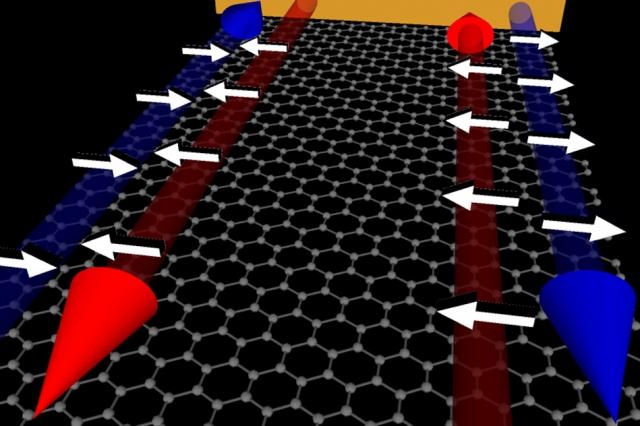As the Signal protocol becomes the industry standard, it’s worth understanding what sets it apart from other forms of end-to-end encrypted messaging.



If you’re a user of Google’s Messages app on your Android smartphone, then you will now likely have the RCS update intended to bring standard text messaging into the current century. RCS is now available in all major countries except China, Russia and Iran. Building on standard SMS capabilities, this adds chat functionality to compete with WhatsApp and iMessage. But, in truth, it doesn’t compete at all. There’s a glaring issue that doesn’t look like being properly fixed anytime soon. This is now bad enough that you should now go use something else.
The issue, of course, is end-to-end encryption. Six months ago, reports emerged that Google was developing this level of security to upgrade RCS. As of this week, this is now finally available for public beta testing. On the surface, its intent is to deliver Android users with an iMessage alternative. But there is a glaring issue—and it’s a deal breaker. This deployment of end-to-end encryption on RCS is not available for groups—that’s seemingly too complex to handle right now. And there’s also no word yet as to when this limited upgrade might be rolled out.
With that in mind, Android users should opt for a different iMessage-like alternative. Fortunately, there is a simple solution available now. While its standard messenger is not end-to-end encrypted by default, Android offers users the option to select an alternative default messenger that does. Signal is the best secure messenger available. And while its install base is modest in comparison to WhatsApp or iMessage, it’s growing fast.

Quantum computing is a new paradigm in computing that utilizes the benefits of quantum mechanics to enhance the computing experience. Quantum computers will no longer rely on binary digits (0 and 1 states), that computers have relied on since the early beginnings, but will instead use quantum bits, which can be in a superposition of states. Quantum bits, or qubits, have the advantage of being in many states at once, offering parallel computing advantages. For example, they have long been regarded as far superior to classical computers for applications in data encryption.
Although the concept of quantum computers has been known for several decades, practical realizations are still lacking. The main limiting factor has been the critical influence of the environment on a qubit. Most physical systems need to be in perfectly controlled conditions in order to remain in the superposition state, whereas any interaction (mechanical, thermal, or other) with the environment perturbs this state and ruins the qubit. Such perturbation is termed “decoherence” that has plagued many potential qubit systems.
Graphene, having spurred research into numerous novel directions, is naturally also considered as a candidate material host for qubits. For example, back in 2013, a team of researchers from MIT found that graphene can be made into a topological insulator – meaning that electrons with one spin direction move around the graphene edges clockwise, whereas those that have the opposite spin move counterclockwise. They made this happen by applying two magnetic fields: one perpendicular to the graphene sheet, to make the electrons flow at sheet edges only, and another parallel to the sheet, that separates the two spin contributions. Electron spin has long been considered a candidate qubit, because it is inherently a quantum system that is in a superposition of states. In graphene, the spins move along the sheet edges robustly, without much decoherence. Furthermore, the same research showed switching the spin selection on and off, an important feature of q-bit transistors.


Circa 2006
Quantum cryptography (QC) is still in a very early stage and there are very few commercial products available. But this doesn’t prevent researchers to look at new solutions. For example, physicists from the University of Wien, Austria, are testing qutrits instead of the more common qubits. These qutrits can simultaneously exist in three basic states — instead of two for the qubits. This means that QC systems based on qutrits will inherently be more secure. But if QC using qubits has been demonstrated over distances exceeding 100 kilometers, the experiments with qutrits are today confined within labs. For more information, read this abstract of a highly technical paper or continue below.


Quantum computers are now a reality, although they are still too rudimentary to factor numbers of more than two digits. But it is only a matter of time until quantum computers threaten Internet encryption.
Nature caught up with Shor to ask him about the impact of his work — and where Internet security is heading.
Nature talks to Peter Shor 25 years after he showed how to make quantum computations feasible — and how they could endanger our data.


Chinese spies are different from those of most other wealthy and developed countries where the majority of spies are highly trained, with some serving under diplomatic cover and others operating under what the US Intelligence Community calls Non Official Cover (NOC).
Chinese intelligence operations are the first in modern times to use, as a foundation, the whole of society. Because of this, China’s espionage tactics are sometimes artless, operating with little in the way of standard spy-fare, (encrypted communication, dead drops, etc.) instead relying on an overwhelming volume of espionage operations conducted by all manner of citizen and a sort of impunity inherent in the lack of substantive penalty for when a Chinese agent is discovered, a study I recently published analyzing 595 cases of intelligence collection efforts sanctioned and abetted by the Chinese Communist Party.

In a world first, researchers from the University of Ottawa in collaboration with Israeli scientists have been able to create optical framed knots in the laboratory that could potentially be applied in modern technologies. Their work opens the door to new methods of distributing secret cryptographic keys—used to encrypt and decrypt data, ensure secure communication and protect private information. The group recently published their findings in Nature Communications.
“This is fundamentally important, in particular from a topology-focused perspective, since framed knots provide a platform for topological quantum computations,” explained senior author, Professor Ebrahim Karimi, Canada Research Chair in Structured Light at the University of Ottawa.
“In addition, we used these non-trivial optical structures as information carriers and developed a security protocol for classical communication where information is encoded within these framed knots.”